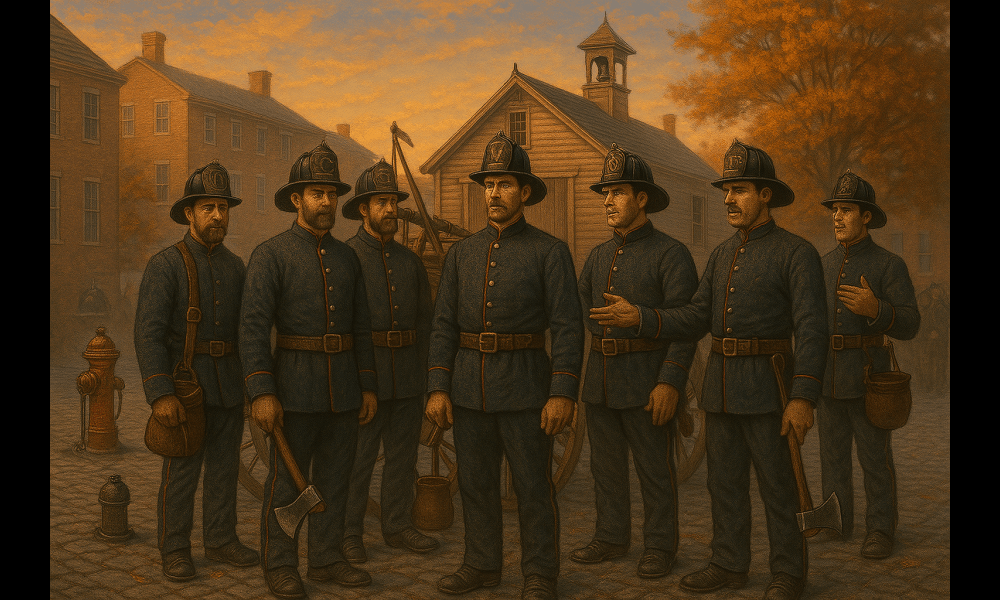The Volunteer Axe Company of Halifax was formed in 1861 as part of a complete overhaul of the city’s fire services following the disastrous fires of 1857, 1859, and 1861. It marked a significant shift in how the city approached fire protection.
Origins and Formation
The Volunteer Axe Company was officially created in 1861, alongside two other new companies:
These companies replaced the Union Engine Company and the Axe Fire Company, both of which were disbanded after public outrage and investigations revealed severe shortcomings in Halifax’s firefighting infrastructure and organization.
The reorganization stemmed from the belief that a new generation of volunteers, better trained and better managed, could provide more effective service.
Duties and Functions
The Volunteer Axe Company was a support and rescue unit, responsible for critical tasks that complemented water-based firefighting operations:
-
Forcible entry: Using axes and hooks to access burning or locked buildings.
-
Ventilation: Cutting holes to release smoke and heat.
-
Salvage operations: Protecting and recovering valuable items from fire-damaged buildings.
-
Ladder work: Deploying and operating ladders for rescue and rooftop access.
-
Hook and ladder transport: Moving and operating the company's equipment, often manually pulled.
Their role was vital to the efficiency of fire suppression, as engines and hose crews depended on clear access, safe entry points, and roof operations—all facilitated by the axe company.
Location and Operations
-
The company was based at the Spring Garden Road Engine House, beginning in 1861. This location served as a key hub for firefighting operations in the southern half of the city.
-
The company was noted for its physical strength, agility, and specialized tools, and often included tradesmen—particularly carpenters and shipwrights—who were familiar with structural materials and hazards.
Service Highlights and Challenges
-
The Volunteer Axe Company participated in numerous fire responses throughout its existence and was often praised for their courage in hazardous conditions, especially roof fires.
-
It remained a volunteer-based unit throughout its lifespan, even as other components of Halifax’s firefighting system became more formalized.
Disbandment
The company was disbanded in 1896, when the Halifax Fire Department became a fully municipalized, paid service. Its disbandment marked the end of Halifax’s long-standing volunteer fire tradition, which had begun over a century earlier.
Legacy
-
The Volunteer Axe Company left a legacy of bravery, technical skill, and community commitment.
-
It represented a critical bridge between the era of unregulated fire volunteers and the modern, professional Halifax Fire Department.
-
Former members of the Axe Company were instrumental in shaping later fire regulations and training standards in the city.


